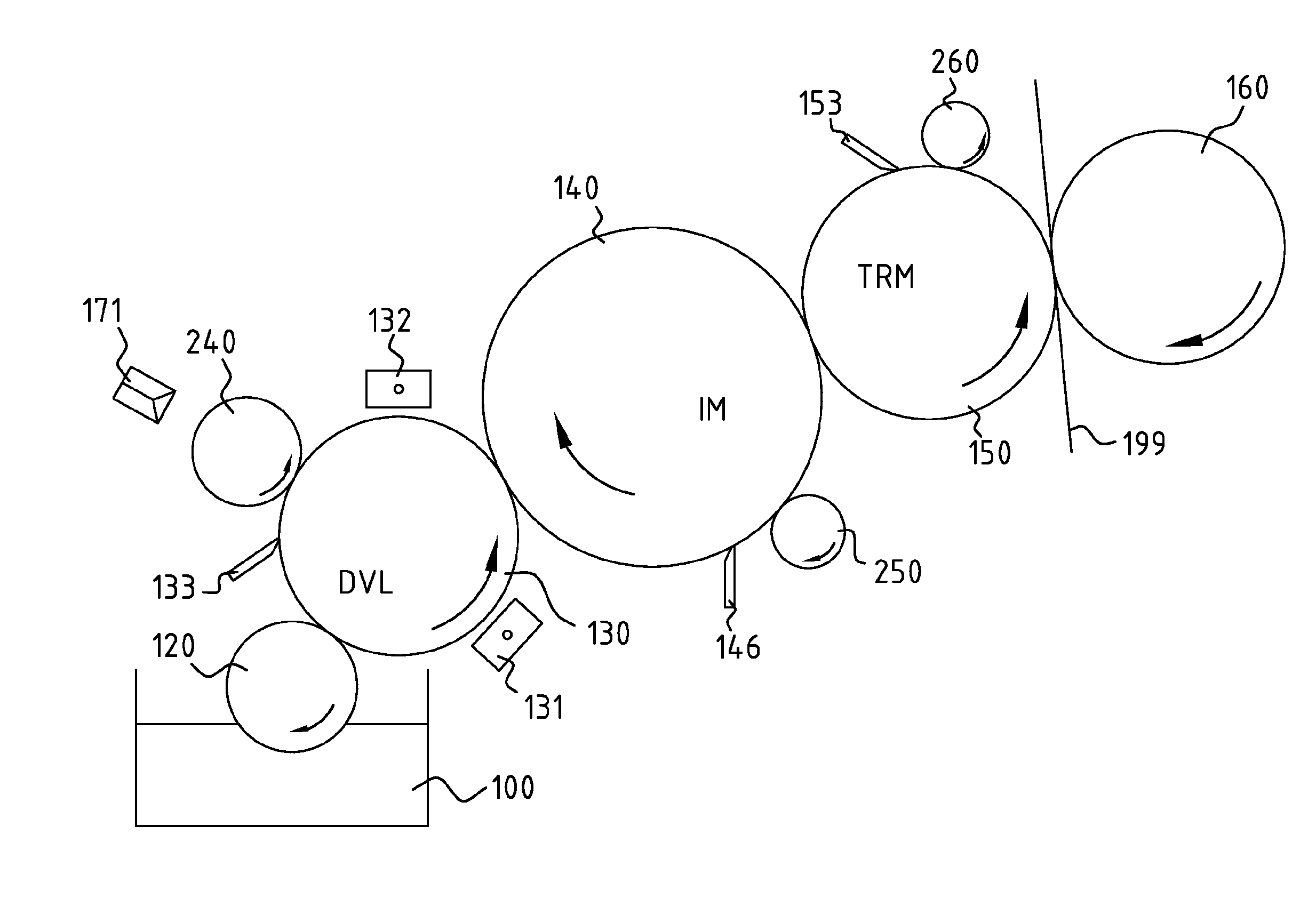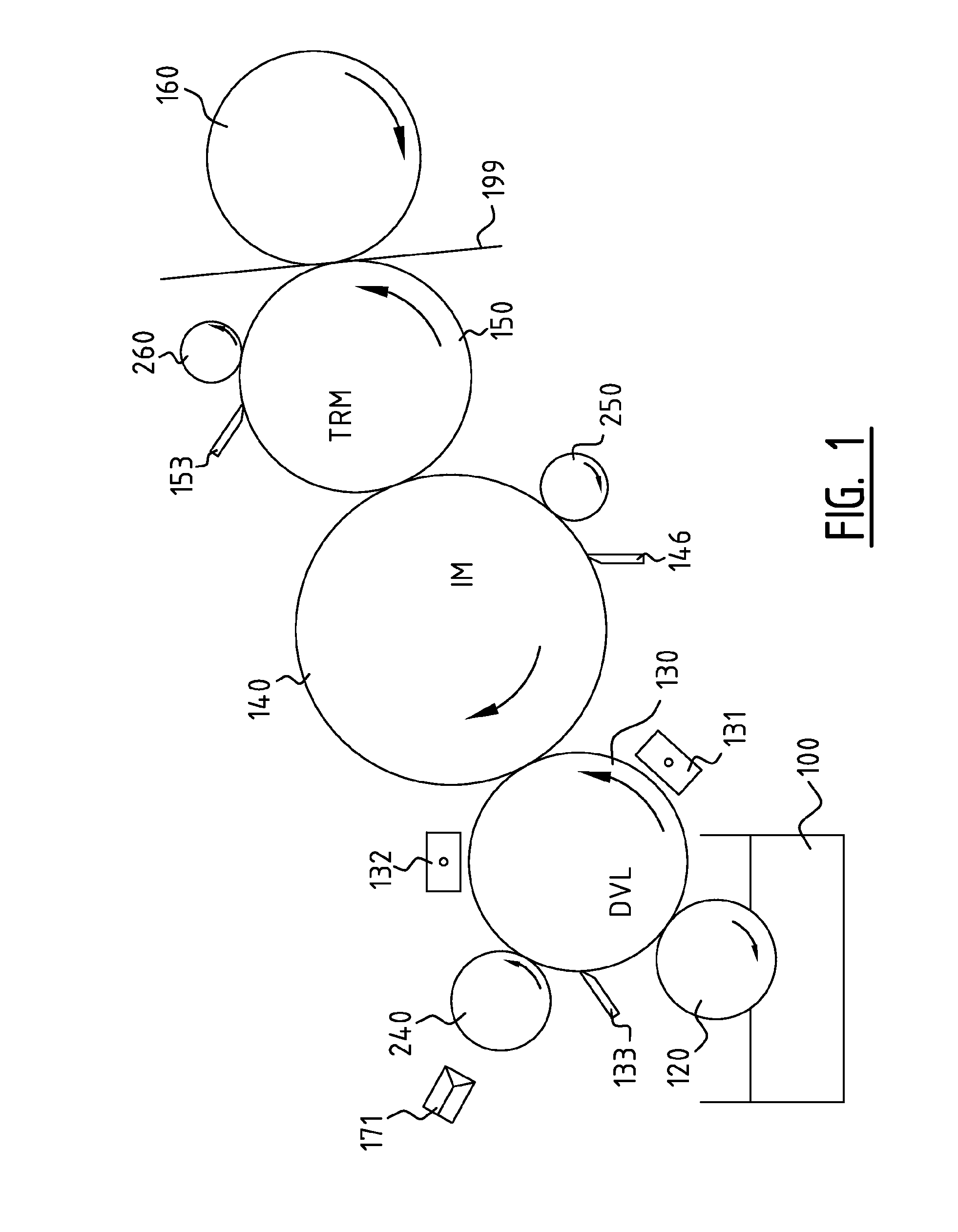Digital Printing Process and Liquid Toner Dispersion Therefore
a liquid toner and printing process technology, applied in the field of digital printing process, can solve the problems of insufficient formation of liquid toner dispersion film on the development member, kinetic problems in terms of electrophoretic response slowdown, and typical caking, and achieve the effect of being more economical and concis
- Summary
- Abstract
- Description
- Claims
- Application Information
AI Technical Summary
Benefits of technology
Problems solved by technology
Method used
Image
Examples
examples
[0063]Test System
[0064]A printing test was carried out on an apparatus as shown in FIG. 2. However, the dispersing agent was added directly into the tank 101 for a DA container 102, rather than on roller 240 for 2 hours by printing a test file with a page coverage of 15% on a substrate (115 gsm Digifinesse™—a brand of UPM). The page coverage is defined as the ratio between image area and total area of the test file. The solid content of the liquid toner dispersion in tank 101 was kept in a range between 23 and 26% during the printing test by adding the carrier liquid from tank 103 and toner concentrate from tank 104 in appropriate flows. The engine was running at 60 cm / s and the applied mass of liquid toner on member 130 was between 4.5 and 6.5 g / m2. The charging 131 was operated so that the surface potential just after charging was between 25 and 40V measured with a surface potential measurement device.
[0065]The sample was fused on a fuser device comprising non-contact fusing means...
PUM
| Property | Measurement | Unit |
|---|---|---|
| conductivity | aaaaa | aaaaa |
| diameter | aaaaa | aaaaa |
| diameter | aaaaa | aaaaa |
Abstract
Description
Claims
Application Information
 Login to View More
Login to View More - R&D
- Intellectual Property
- Life Sciences
- Materials
- Tech Scout
- Unparalleled Data Quality
- Higher Quality Content
- 60% Fewer Hallucinations
Browse by: Latest US Patents, China's latest patents, Technical Efficacy Thesaurus, Application Domain, Technology Topic, Popular Technical Reports.
© 2025 PatSnap. All rights reserved.Legal|Privacy policy|Modern Slavery Act Transparency Statement|Sitemap|About US| Contact US: help@patsnap.com



